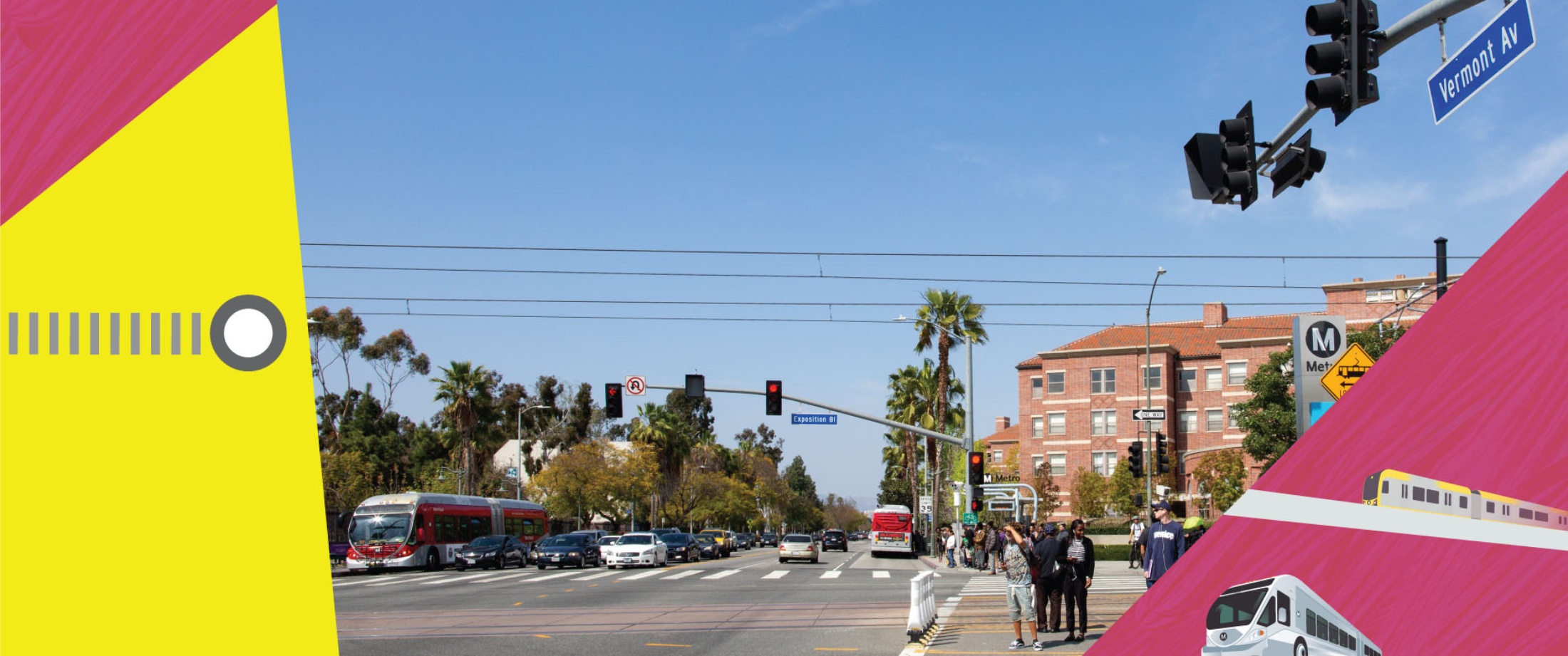Learn the goals and benefits of the Vermont BRT project.
Vermont Transit Corridor
Bringing faster, more reliable bus service to Vermont Avenue, LA County’s busiest bus corridor.

Project Type
Better Transit
Current Phase
Environmental Review
Estimated Project Completion
2028

Metro is planning a 12.4-mile Bus Rapid Transit (BRT) line along Vermont Avenue, from Sunset Boulevard to 120th Street. The project will improve speed, reliability, and access for over 36,000 daily riders, connecting diverse communities to jobs, schools, and regional transit.

Take Action
Review Findings
Explore equity, displacement, and business case findings.
Timeline
1990
Voters pass Proposition C, establishing a countywide half-cent sales tax to support transit improvements, laying the groundwork for future corridor investments.
1993-1996
Opening of Metro’s Red Line (now B and D Lines), including Vermont Avenue stations such as Wilshire/Vermont and Vermont/Santa Monica.
2013
Metro completes a countywide Bus Rapid Transit (BRT) study, identifying Vermont Avenue as a top candidate corridor due to high ridership levels (over 45,000 daily boardings).
2015-2017
Metro completes technical studies and initial planning for bus and rail options along the corridor.
2016
Measure M is approved by voters. It includes funding for the Vermont Transit Corridor, prioritizing BRT implementation by 2028 and allocating rail conversion funding after 2067.
2019
Metro releases the Vermont Transit Corridor Rail Conversion Feasibility Study. The study outlines possible heavy and light rail alternatives but identifies BRT as the near-term mode due to cost and timeline considerations.
2022
Metro Board adopts a three-phase strategy for the corridor:
- Short-term (quick-build improvements)
- Mid-term (dedicated BRT by 2028)
- Long-term (rail conversion after 2067)
2024
Metro Board approves near-term improvements, including bus-only lanes in two segments of Vermont in late May 2024, and construction of these near-term improvements began in March 2025.
2025
In March 2025, the Metro Board of Directors approved the SB922 California Environmental Quality Act (CEQA) exemption and adopted the Locally Preferred Alternative (LPA): a 12.4-mile side running BRT with 26 stations at 13 major intersections.
2028
BRT infrastructure construction begins in late 2026/early 2027, with the goal of opening service by the 2028 Summer Olympic/Paralympic games.
2067
Measure M rail conversion funding becomes available, allowing Metro to initiate the rail mode transition.
Events
Join us for an in-person update on the D Line Extension Transit Project Beverly Hills stations.
Beverly Hills City Hall
455 North Rexford Drive, Beverly Hills, CA 90210
Free
Frequently Asked Questions
What is the Vermont Transit Corridor?
A planned Bus Rapid Transit (BRT) system to provide faster, more reliable service along Vermont Avenue, serving over 36,000 riders daily.
What is Bus Rapid Transit?
A high-quality bus service with dedicated lanes, enhanced stations, frequent service, and faster boarding—offering a rail-like experience.
What route will the Vermont BRT take?
From Sunset Boulevard to 120th Street, using side-running lanes and connecting to Metro B, C, D, and E Lines and over 20 bus lines.
What is the current status?
Metro approved the Locally Preferred Alternative in March 2025 and is beginning NEPA review and preliminary engineering.
Will Vermont ever have rail?
Rail remains a long-term option, with environmental review expected as early as 2026, contingent on funding.
Get Involved
Help us shape the way you move

Got questions or ideas? Our project team is here to listen.
By connecting with us, you bring valuable insights to the table, helping create a Metro that truly reflects LA’s unique spirit.

Sign up for email notifications.
Sign up to receive project updates and work notices.
